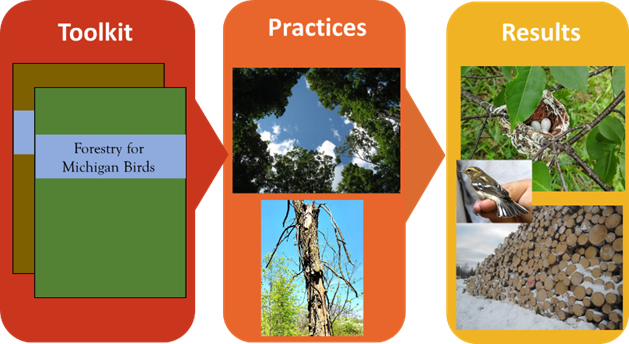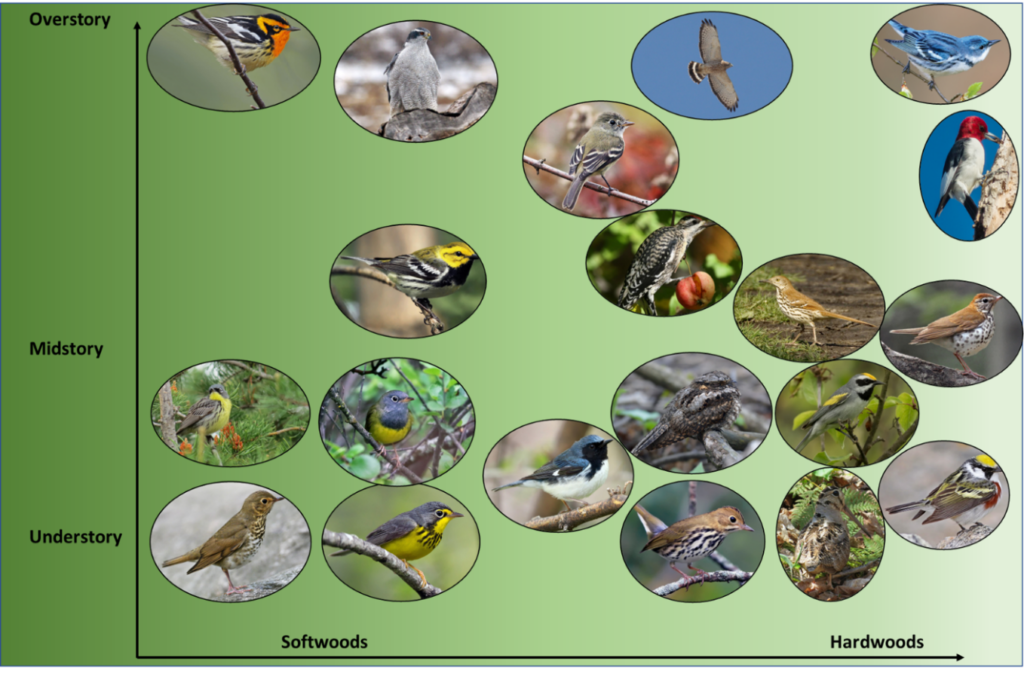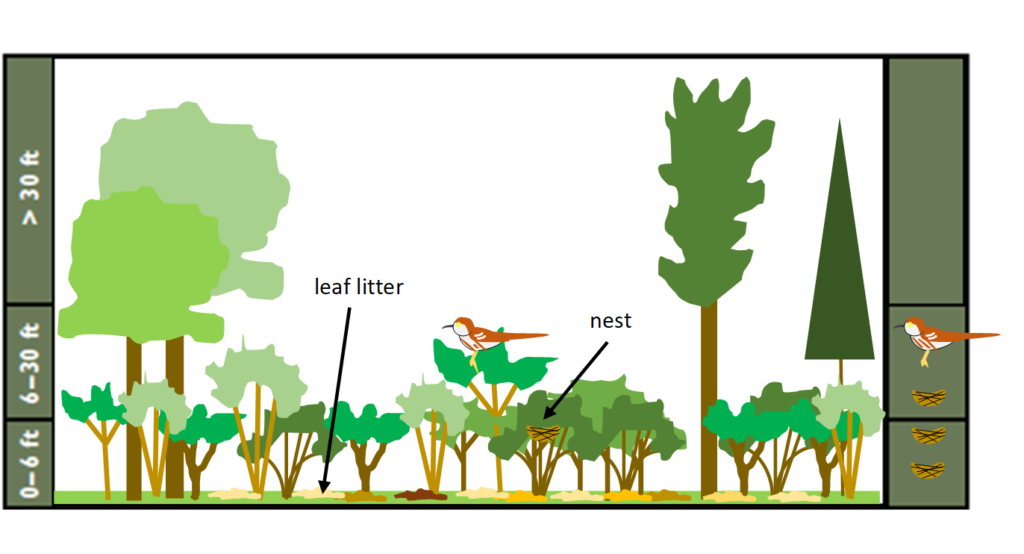Forestry for Michigan Birds (FMB) is a new program all about helping Michigan landowners, foresters, and other natural resource professionals manage forests in ways that benefit birds and other wildlife. FMB’s strength lies in its diverse Steering Committee with representation from federal and state agencies, non-profit organizations, private forest owners, and the timber industry. Working together, we aim to equip landowners and managers with small tweaks to common forestry practices that they can adopt at scale to protect, restore, and improve Michigan’s forest habitat for priority bird species.
“Forestry with Birds in Mind” Toolkit
The FMB approach will be detailed in a “Forestry with Birds in Mind” Toolkit, which is anticipated to be published in January of 2022. The Michigan Toolkit will be informed by similar previously completed guides from other states, including Vermont’s Foresters for Birds and Forestry for Maine Birds. Recommendations will also integrate climate adaptation strategies to help land managers consider climate change while meeting other management goals. Once completed, FMB will use the Toolkit to collaboratively train key stakeholders, including forest landowners, land managers, and natural resource professionals, through a series of webinars and workshops.
The “Forestry with Birds in Mind” Toolkit will contain three resources:
- Forester/Land Manager Guidebook (with stand-level datasheet to assess bird habitat)
- Landowner Guidebook
- FMB Forest Birds Pocket Guide

The goal of FMB is to increase the use of bird & climate-friendly Best Management Practices, resulting in healthy, diverse, and resilient forested landscapes.
FMB’s 20 Priority Bird Species
Starting with the Northern Forest Bird Network’s Priority Forest Bird Species-Habitat Matrix and adapting it for Michigan, FMB has identified 20 priority bird species. As a collective, these 20 species represent the array of forest types and habitat structures needed to support healthy, diverse, and productive forests across the state. Many of these birds are experiencing steep declines and/or have a significant portion of their breeding range in Michigan. This list includes rare forest bird species, such as the Golden-winged Warbler and Kirtland’s Warbler, hunted species (American Woodcock), and species that require specific forest habitat elements such as snags (Red-headed Woodpecker).
Test your forest bird ID! How many of the FMB Priority Species can you identify? Answers are roughly located in the chart below:


Where in the Woods? Birds are placed in the type of forest they prefer (softwoods, mixedwoods, hardwoods), and the place in the forest where they either nest or sing from (overstory, midstory, understory).
Lessons Learned (so far)
Forestry for Michigan Birds was formed in 2018. Since then we have assembled a robust steering committee, developed a science-based priority species list, hosted a scoping workshop for foresters and landowners, and secured funding to develop the Toolkit. In that time, we’ve learned some valuable lessons including:
- Gather input from a diverse array of stakeholders (loggers, industry, state, federal, tribal, non-profit, private foresters, landowners, biologists).
- Think “forest-forward” to ensure recommendations are practical and actionable. Land managers usually ask, “What forest type am I in?”, not, “What bird species should I manage for?” As such, our Toolkit will be organized by forest type rather than bird species, and silvicultural prescriptions will be generated by forestry professionals.
- Integrate climate science at the ground floor. Climate-smart and bird-smart forestry go hand in hand. FMB has partnered with the Northern Institute for Applied Climate Science to incorporate climate adaptation strategies directly at the start of Toolkit development, rather trying to tie it in later.
- Go statewide. Initially, our species list and forest types only encompassed the northern portion of Michigan (BCR 12). Our Steering Committee ultimately decided to expand our scope to include the southern portion (BCR 23), covering the full state.

Brown Thrasher desired habitat sketch developed by Forester and Steering Committee Member, Josh Shields.
Who created FMB?
FMB is a collaborative effort led by the American Bird Conservancy in partnership with the Natural Resources Conservation Service, U.S. Fish and Wildlife Service, U.S. Forest Service, Northern Institute of Applied Climate Science, Michigan DNR, Michigan Audubon, Michigan Forestry Assistance Program, The Forestland Group, Caretaker Forestry, Michigan Tech University, and Michigan State Extension.
Funding for this project is provided by the U.S. Forest Service’s Landscape Scale Restoration Grant Program.
Want to get involved or learn more?
We are looking for a team of “Early Adopters” to review the Toolkit materials and provide feedback to ensure it’s practical and actionable on the ground. If you’d like to be an “Early Adopter,” or if you’d simply like to receive updates about FMB, contact Kayla Knoll, FMB Coordinator at kknoll@abcbirds.org; 906-251-3065.


